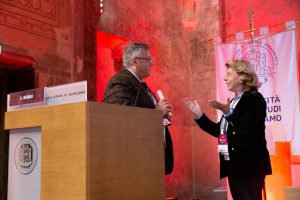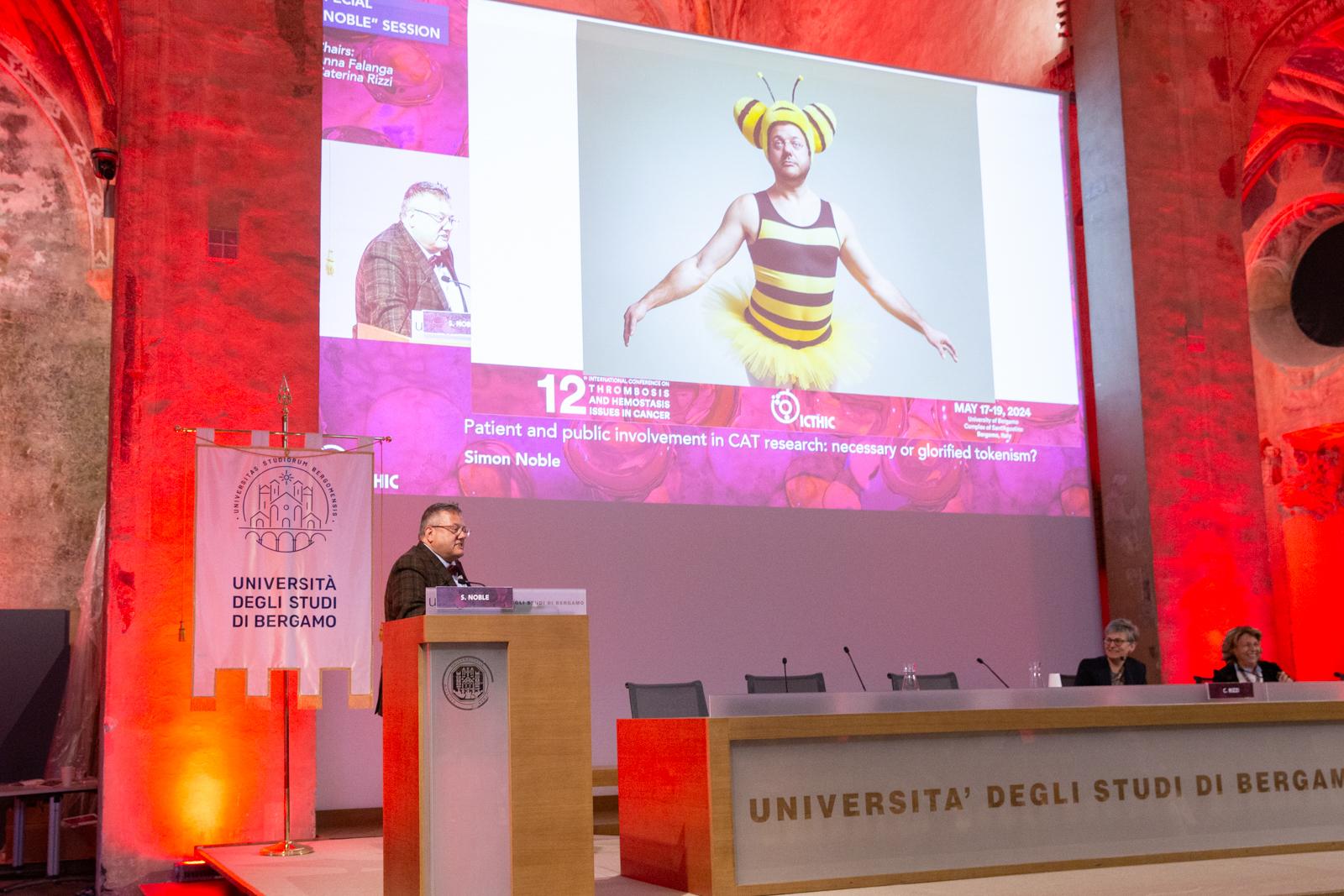On Saturday evening, May 18, 2024, after two intensive days of
ICTHIC characterized by high-level scientific communications, participants were involved to a special “Noble Session.” On the podium was not a Nobel laureate, but Simon Noble, from Cardiff, UK.
Those who regularly attended to the congress already knew that the next 30 minutes would be full of interest, stimulation and, no less, British humor. Simon Noble is known among the community of researchers and clinicians specializing in thrombosis and cancer not only for his scientific authority but also for the originality and eccentricity of his communication style. Expectations were not disappointed: his presentation was profound and original.
Noble’s topic was about public and patient involvement in clinical research, an issue that has gained increasing attention in recent years. Noble pointed out that this involvement is often viewed variably by different organizations, sometimes perceived as a mere formality to be fulfilled in order to initiate a research project.
To clarify what public and patient involvement in research is not, Noble clarified that it does not mean recruiting people to participate to a study, conducting a research project to understand patients’ opinions, developing tools to assess quality of life, translating research into clinical practice, or obtaining letters of support from patient organizations for funding requests.
Real public and patient involvement means conducting research with or by members of the public, rather than on or for them. Patients, or others with relevant experience, contribute to the design, conduct, and dissemination of research. Not only study participants, but also those who actively participate in the research process are implied.
There are several advantages derived from public and patients’ interaction. It justifies the use of resources, assesses the relevance of the research, estimates the likelihood of research success, and predicts the impact of the results on health. For researchers, this results in more relevant studies for participants, with greater acceptance and understandability of study information. It also improves patients’ experience of research and communication of results.
To achieve this target, Noble listed some key principles: involve the right and enough people, make sure that those are sufficiently engaged, and clearly describe how involvement is useful and important.
Addressing an audience of researchers and clinicians specializing in thrombosis and cancer, Noble presented examples of studies that have followed these principles. A first example is the HIDDen study (Hospice Inpatient Deep vein thrombosis Detection), a multicenter study that explored the prevalence and natural history of venous thrombosis in patients with advanced cancer. After the results were published, a forum analyzed the strengths and weaknesses of the study, providing pulse for the design of HIDDen2. Out of this project came SERENITY, which will develop a shared decision support tool to facilitate therapeutic decisions on the use of antithrombotic therapy in terminal cancer patients, with contributions from eight European countries.
Simon Noble’s presentation ended with thunderous applause, a sign of the audience’s strong appreciation.

Prof. Simon Noble receives a parchment from Prof. Anna Falanga, in recognition of outstanding achievements in the field of cancer-associated thrombosis and as a thanksgiving for the stimulating and always witty presentations during the Bergamo Conference (ICTHIC).

